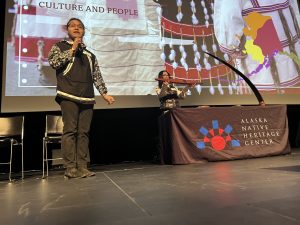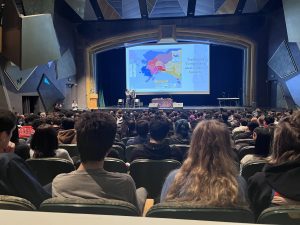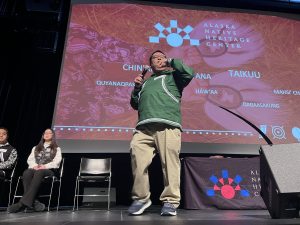Podcast: Play in new window | Download | Embed
The National Park Service (NPS) held a recent symposium on the cultural impacts on Tribes by the 1924 establishment of Wupatki National Monument.
KNAU’s Richard Davis attended the event at the Museum of Northern Arizona in Flagstaff and has this report.
Central to the day was a panel to elevate Indigenous perspectives of Wupatki’s federal management.
The panelists recognized efforts by the Park Service to incorporate tribal history and asked for better representation in administrative roles and increased education on Wupatki’s true history.
Stewart Koyiyumptewa, Hopi Cultural Preservation Office director, took issue with the very creation of the Monument and the perception of Hit’satSenom structures as “ruins”.
“Wupatki, as it is known today, we have never waived our right to that place. We still call that our home. It’s not abandoned as archaeologists, anthropologists and even the Park Service may think. We still have deep connections to that area.”
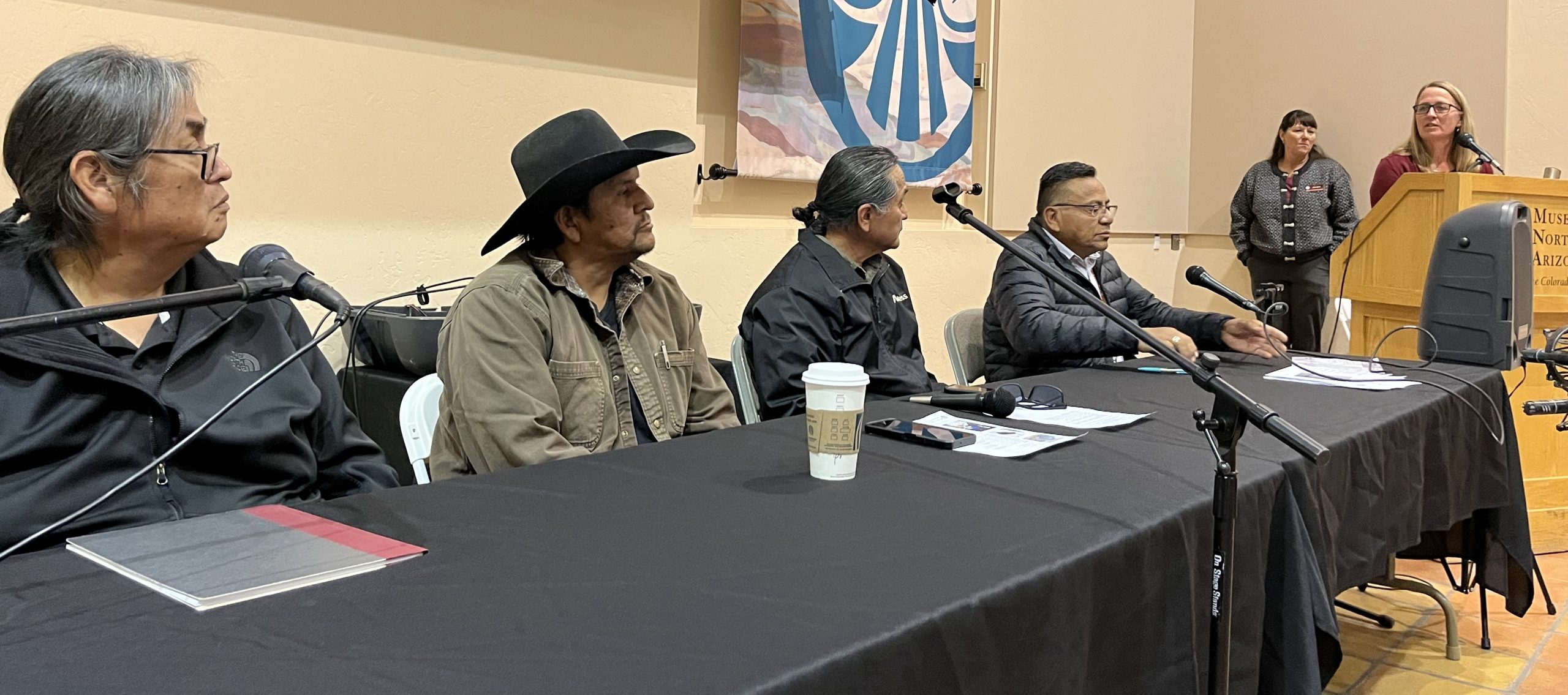
(Photo: Richard Davis)
Navajo Nation Historic Preservation Officer Richard Begay condemned regulations that hinder religious practices.
“We have to have permission from Park Service to access our sacred sites, to collect plants. If that plant only grows on Wupatki … if it is restricted then the knowledge of those plants and the rituals associated could easily be lost.”
NPS staff recognized the impact the management of Wupatki has had on Indigenous people.
Amy Horn, cultural resources program manager for Flagstaff Area National Monuments, is looking towards the future.
“It’s a painful part of our monument’s history. We want to acknowledge it and make sure that they are heard so that we can have a collaborative relationship in the future.”
The monument’s official 100th anniversary is December 9.
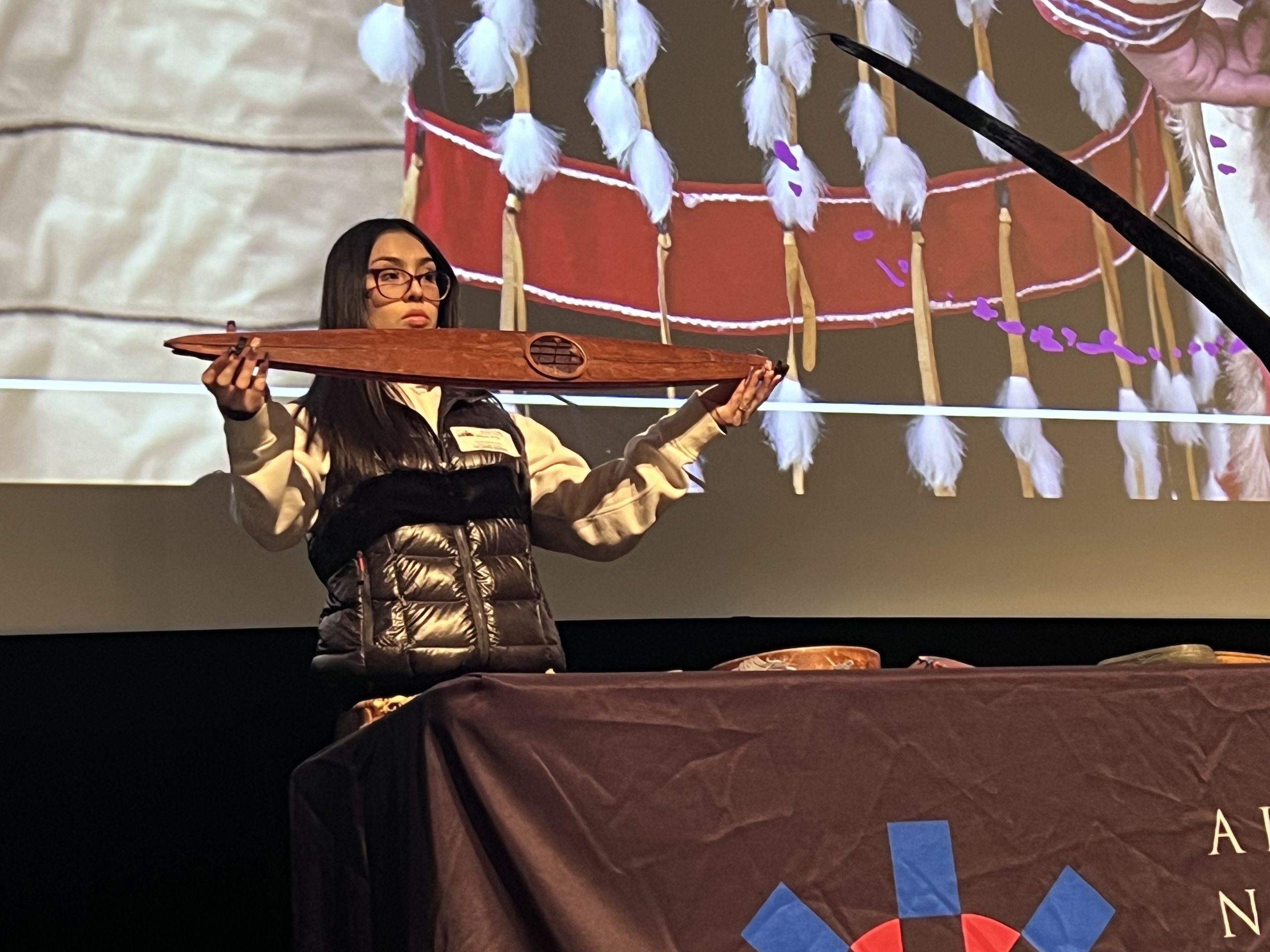
Julissia King holds up model of a traditional kayaq. (Photo: Rhonda McBride)
The Alaska Native Heritage Center in Anchorage is known for its exhibits and cultural programs.
But as Rhonda McBride from our flagship station KNBA tells us, the center’s Indigenous awareness programs are growing in popularity, especially during Native American Heritage month.
Almost 700 students filled the auditorium at East Anchorage High School this month to learn about Alaska’s many different Native cultures and their values.
The team from the Alaska Native Heritage Center had a warm reception from students for two separate programs this month.
“We do a lot of amazing stuff. It fills my cup.”
Chris Delgado manages the Heritage Center’s cultural awareness programs and says they can be customized to meet the needs of a wide variety of organizations.
“We have National Park Service. We’re working with the FBI. We are working with the United States Air Force.”
Maureen Cronin, an academics coach at East High, is not surprised that companies want to invest in programs that raise their employees’ cultural awareness.
She says cultural literacy is important everywhere, but especially at East, which has students from fifty different cultures and is one of the most diverse schools in the nation.
“It’s really important to demystify cultural generalities, and it’s important to develop cultural understanding.”
And cultural appreciation for what the Heritage Center calls the genius of Indigenous culture, or “Indigi-nuity”.
“That’s how we survived out in the Arctic, back in the day.”
- Sakkaaluk Panningona talks about how kayaqs were used to hunt seals. (Photo: Rhonda McBride)
- East Anchorage High School Cultural Awareness Training Program. (Photo: Rhonda McBride)
- Chris Delgado, manager of the Alaska Native Heritage Center Cultural Awareness Training. (Photo: Rhonda McBride)
Colton Paul, a six-time gold medalist at the Arctic Winter Games who demonstrates traditional Alaska Native games at the workshops, says the athletes and their feats of strength and endurance epitomize “Indigi-nuity.”
“They can jump so high. They can kick way above their heads. I remember when I was a little kid, I would see these other kids kicking way above their heads, I would think, ‘That is right above the stars. That’s so high.’”
The cultural awareness trainers at the Heritage Center say they’ve noticed that when people gather to learn about another culture, they also learn to build better relationships with each other.
Get National Native News delivered to your inbox daily and stay up-to-date on the 2024 Native Vote. Sign up for our daily newsletter today.

